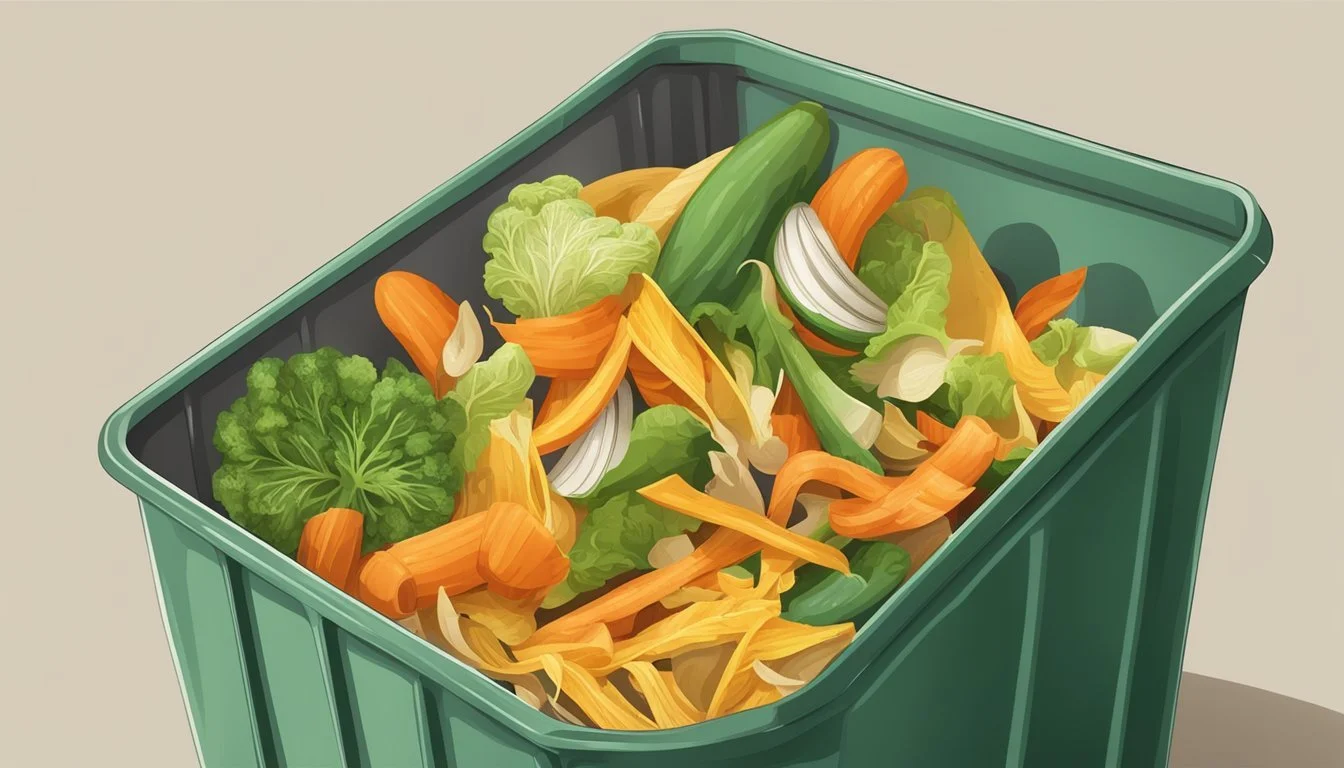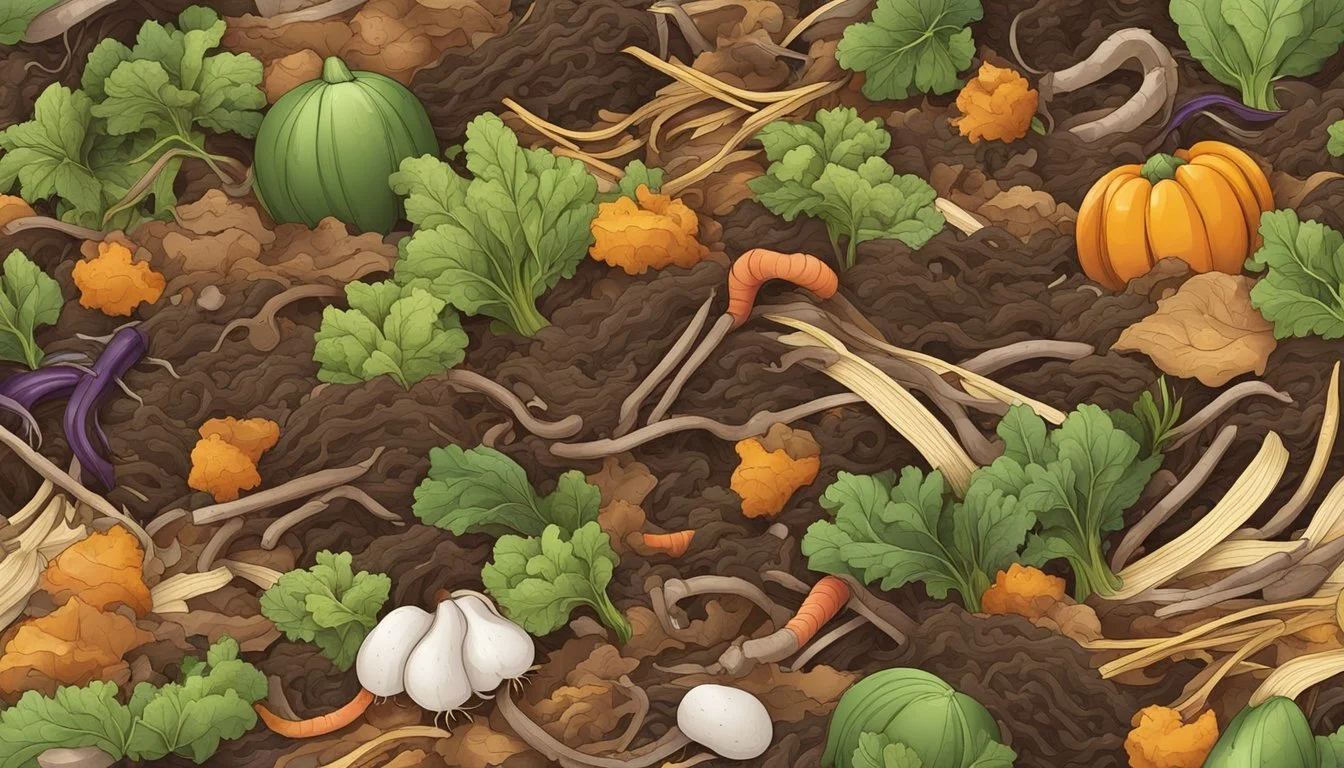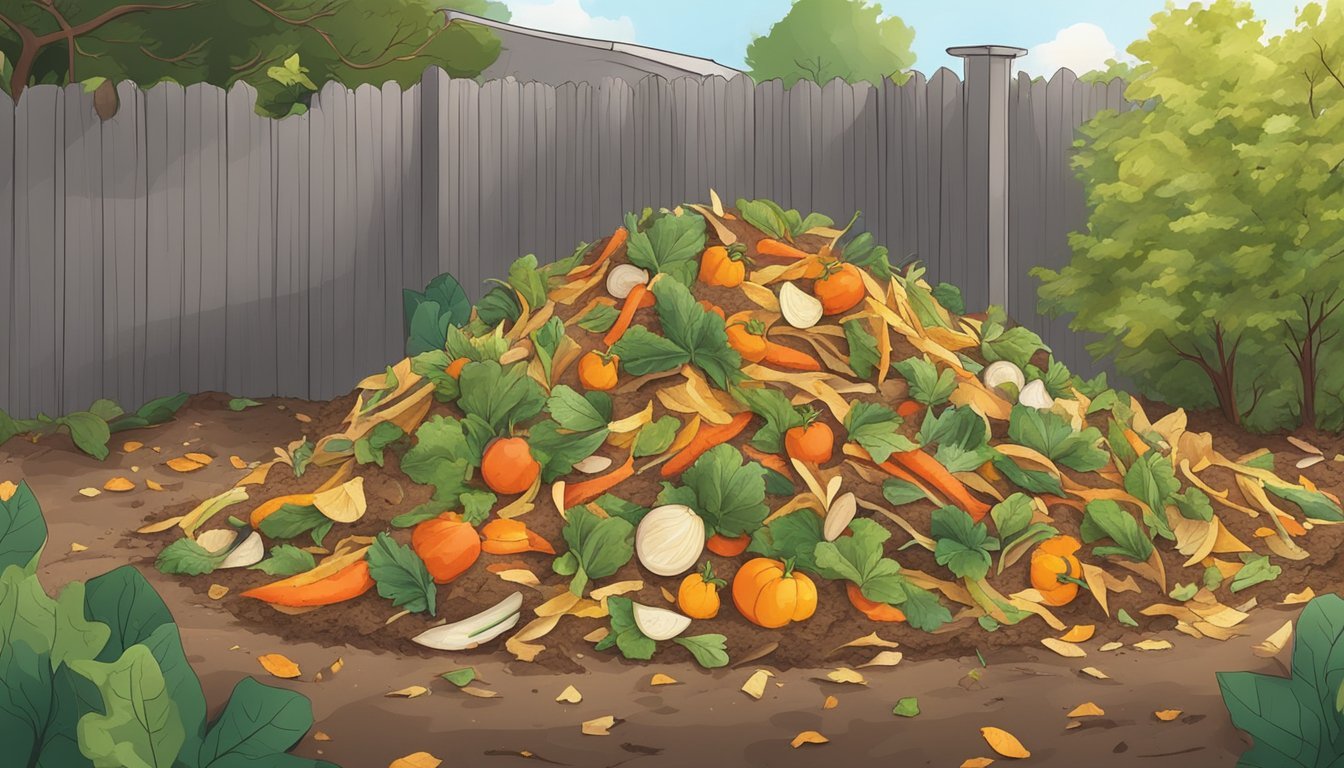Can You Compost Vegetable Peelings?
The Essentials of Organic Waste Recycling
Composting is a beneficial process for converting organic waste into a valuable amendment for the soil. Vegetable peelings are commonly produced in most kitchens and often end up as waste. However, these peelings are rich in nutrients and can be effectively turned into compost. They contribute to the balance of greens, which are nitrogen-rich materials in compost, and are essential for the microbial activity that drives the decomposition process.
When composting vegetable peelings, it's important to cut them into smaller pieces to speed up the breakdown. The variety of peels, ranging from potatoes and carrots to squash and kale, provides a diverse array of nutrients to the resulting compost. Inclusion of vegetable peelings in the compost pile increases the activity of microorganisms, which in turn accelerates the composting process.
While composting these peelings, one should also be aware of the proper balance of green and brown materials in the compost bin. This balance is crucial to maintain an odor-free and efficient composting system. Browns, which are carbon-rich materials such as dry leaves or shredded paper, must be mixed with greens like vegetable peelings to avoid issues like foul odors and pests. Properly managed, composting of vegetable peelings can be a simple and effective method of waste reduction and soil enrichment.
Understanding Composting Basics
The process of composting effectively recycles various organic materials otherwise regarded as waste. Through this process, one contributes to creating a valuable addition for gardening while simultaneously enhancing environmental conservation.
What Is Composting?
Composting is the controlled breakdown of organic material such as leaves, fruit and vegetable peelings, and grass clippings, by microorganisms. The result is compost, a rich earth-like material that significantly improves soil properties. It is a natural form of decomposition that converts organic matter back into nutrients that can be used by plants.
Benefits of Composting
Composting provides several benefits; it enriches the soil, helping retain moisture and suppress plant diseases and pests. Furthermore, it reduces the need for chemical fertilizers, promoting the production of beneficial bacteria and fungi that break down organic matter to create humus—a nutrient-filled material. Reducing the amount of organic waste sent to landfills also lessens landfill mass and methane emissions, supporting a healthier environment.
Setting Up Your Compost Pile
Creating a successful compost pile requires careful planning and attention to detail. The setup process encompasses choosing an appropriate location, selecting a containment method, and correctly layering materials.
Selecting a Location
The ideal location for a compost pile should adhere to the following criteria:
Accessibility: The site should be convenient for adding materials year-round and close to the source of your compostable waste.
Drainage: Choose a well-draining area to prevent waterlogging.
Sun Exposure: A balance of sun and shade helps maintain the necessary temperature range.
Compost Bin Options
When deciding on a compost containment system, consider these options:
Open Bins: They allow for easy turning of the compost but may attract wildlife.
Closed Bins: Offer pest control and can retain heat to speed up the decomposition process.
Tumblers: Facilitate easy turning, enhance aeration, and typically compost materials more quickly.
It is crucial that whichever compost bin is chosen, it provides adequate ventilation for air flow and has the capacity to hold both green (nitrogen-rich) and brown (carbon-rich) materials.
Building a Compost Pile
To construct the compost pile:
Start with a layer of brown materials like hay or leaves to allow for air circulation at the bottom.
Add a roughly equal amount of green materials, such as vegetable peelings, ensuring they are not whole or in large pieces which can slow the process.
Maintain a balance of moisture by watering if the pile is too dry or adding dry browns if it is too moist.
Mix the materials periodically to introduce air and ensure an even decomposition.
Ingredients for Your Compost
Composting is the process of recycling organic matter, such as vegetable peelings, into rich soil amendment. A successful compost pile requires a proper ratio of nitrogen-rich green waste and carbon-rich brown waste.
Greens Vs. Browns
In composting, the terms "greens" and "browns" are used to differentiate between nitrogen-rich and carbon-rich materials, respectively. An effective compost pile should maintain a balance between these two types, typically aiming for a ratio of one part greens to three parts browns.
Greens (Nitrogen-rich material):
Kitchen scraps (e.g., vegetable peels, fruit waste)
Grass clippings
Coffee grounds
Green plant material
Browns (Carbon-rich material):
Dry leaves
Straw
Shredded paper
Cardboard
Woody branches
Vegetable Peelings and Other Greens
Vegetable peelings are an excellent source of nitrogen, which is essential for the composting process. They are considered green waste, along with other kitchen scraps like fruit remnants and coffee grounds. These ingredients facilitate the growth of microorganisms that decompose the organic matter.
Examples of green waste:
Vegetable peelings (e.g., potato, carrot, cucumber)
Fruit scraps
Coffee and tea grounds
Fresh grass clippings
Balancing Your Compost Ingredients
To achieve optimal decomposition and prevent issues such as odors or pests, the compost pile should have the right balance of greens and browns. Too much green material can lead to a slimy, smelly pile, while an excess of browns can slow down the composting process.
Balancing tips:
Add roughly three times as many browns as greens.
Shred or chop larger pieces to speed up decomposition.
Regularly turn the pile to aerate and mix the materials.
A diverse mix of vegetable scraps and other kitchen waste, coupled with an appropriate amount of leaves, paper, and other brown materials, will produce a nourishing compost for garden use.
Maintaining a Healthy Compost
For compost to decompose efficiently, it requires proper maintenance involving aeration, moisture control, and pest management. These factors work in concert to accelerate the composting process while minimizing negative outcomes such as odors and pest attraction.
Aeration and Turning
Compost needs oxygen to support the aerobic bacteria that break down organic matter. Regular turning of the compost pile is essential; it introduces air and distributes moisture. The frequency of turning varies, but a general guideline is to turn the pile every one to two weeks. A compost container with built-in aeration features can help maintain adequate airflow.
Moisture and Temperature Control
The right balance of moisture is critical—compost should be kept damp, but not too wet. Aim for a moisture level similar to a wrung-out sponge. In terms of temperature, a compost pile should maintain an internal heat between 130°F and 150°F (55°C and 65°C) to effectively break down the material while also killing off any harmful bacteria and weed seeds.
Avoiding Pests and Odors
Maintaining compost without attracting flies and pests involves a proper balance of "green" nitrogen-rich materials, like vegetable peelings, and "brown" carbon-rich materials, like dry leaves. Enclose the compost in a container with a lid and ensure you bury food scraps deep within the pile to avoid pests and odors. Avoid adding meats, dairy, or oily foods that can attract unwanted critters and lead to unpleasant smells.
What Not to Compost
In composting, the goal is to create a healthy and nutrient-rich environment for decomposing organic matter. However, not all organic materials are suitable for a compost bin. Certain items can attract pests, cause foul odors, or even introduce harmful bacteria and chemicals to the compost pile.
Meats, Dairy, and Processed Foods
Meats and dairy products should never be added to compost. They decompose slowly and emit odors that attract scavengers and pests. Processed foods, often containing oils and preservatives, can disrupt the compost's natural balance and are also best left out.
Avoid:
Meat (including bones)
Fish scraps
Dairy products (such as milk, cheese, butter)
Diseased Plants and Weeds
Adding diseased plants or weeds that have gone to seed can spread diseases and invasive species in your garden when the compost is used. Healthy plant matter is excellent for compost, but one should diligently avoid any plant that looks unhealthy or contains seeds.
Do not include:
Diseased plant materials
Weeds with seeds
Non-Biodegradable Materials
Non-biodegradable materials do not break down and can contaminate the soil and harm the environment. Common items that are often mistakenly added include:
Non-compostable:
Plastics of any kind
Chemical-treated wood or yard debris
Synthetic fibers
Chemicals, including pesticides and herbicides, should not be composted as they can kill beneficial microorganisms in the compost and potentially damage plants when applied to the garden.
Utilizing Finished Compost
Finished compost is a treasure for any garden, teeming with nutrients and organic matter. It serves as a versatile amendment that can be incorporated into the soil or used as mulch to enrich plant health.
When Is Compost Ready?
Visual and Sensory Indicators of Finished Compost:
Color: Dark brown to black
Texture: Crumbly and resembles rich soil
Smell: Earthy, without any sour or ammonia-like odors
The Seedling Test: To confirm the readiness of compost, one might conduct a simple growth test using seeds. If the seeds germinate successfully in the compost without any issues, it indicates that the compost is sufficiently broken down and mature for use.
Applying Compost in Your Garden
Methods of Application:
As Soil Amendment:
Work the compost into the top 6 inches of the soil in your garden beds to enhance soil quality.
Mix a 2 to 3-inch layer of compost into the soil for new plantings.
As Mulch:
Spread a 2 to 3-inch layer on the surface around plants to conserve moisture and suppress weeds.
Use around the base of trees, shrubs, and perennial plants.
Benefits:
Nutrient Rich: Provides a slow-release of essential nutrients over time.
Improves Soil Structure: Enhances aeration and water retention.
Organic Matter: Introduces beneficial microorganisms and organic matter.
Applying the finished compost in these ways nurtures a garden's growth while promoting a healthy, sustainable ecosystem.
Troubleshooting Common Compost Problems
Successful composting balances moisture, odor management, and decomposition rates. Understanding how to troubleshoot common problems ensures a fruitful composting process.
Compost Too Wet or Dry
Compost requires an optimal moisture level to thrive. When compost is too wet, aeration is hindered, and excess water fills air spaces, leading to compaction. This can be addressed by:
Adding brown materials like dry leaves, twigs, or shredded newspaper to absorb excess moisture.
Turning the pile to improve airflow and distribute moisture evenly.
In contrast, dry compost impedes the activity of microorganisms vital for decomposition. To rectify this:
Sprinkle water evenly during dry spells, ensuring the compost feels like a wrung-out sponge.
Cover the pile to retain moisture and protect from excessive sun or wind.
Odor Issues
Unpleasant odors indicate an imbalance in the compost bin. This typically means there is either too much moisture or an excess of green material rich in nitrogen. To eliminate odors:
Balance green and brown materials, maintaining a ratio to prevent too much nitrogen.
Turn the pile regularly to incorporate oxygen and reduce anaerobic processes, which cause bad smells.
Slow Decomposition
The rate of decomposition in a compost pile can be affected by various factors. Slow breakdown often results from:
Low temperatures, which can be mitigated by ensuring adequate pile size to generate sufficient heat.
Lack of nitrogen, which can be boosted by adding green materials like vegetable peelings or coffee grounds.
Insufficient aeration, where turning the pile helps reintroduce air to kick-start the composting process.
Proper compost management resolves many common issues, creating a harmonious environment for organic matter to transform into valuable compost.
Advanced Composting Techniques
Advanced composting techniques take vegetable peeling recycling to the next level by harnessing the power of worms in vermicomposting or the efficiency of fermentation in Bokashi composting. Both methods enrich compost with beneficial organisms and can be faster than traditional composting.
Vermicomposting
Vermicomposting utilizes worms, specifically red wigglers (Eisenia fetida), to break down organic materials. These creatures are highly efficient at transforming kitchen scraps, including vegetable peelings, into nutrient-rich worm castings, an excellent amendment for soil. Essential factors for successful vermicomposting include:
Moisture Level: Maintain bedding at the moisture level of a wrung-out sponge.
Temperature: Keep the bin between 55-75°F for optimal worm activity.
Bokashi Composting
Bokashi composting is a fermentation process that uses a specialized inoculant to preserve organic materials before they break down. This technique relies on bacteria to ferment vegetable peelings and other kitchen waste in an airtight container. Key points:
Inoculants: Use Bokashi bran, rich in Effective Microorganisms (EM), to kickstart the fermentation.
Sealing: Ensure containers are airtight to create an anaerobic environment.
Both methods enhance the nutrient profile of the resulting compost and can be done indoors, making them suitable for urban gardeners.
Composting Resources
In learning to compost vegetable peelings, one can access a variety of quality resources. These resources are designed to provide both beginners and seasoned gardeners with the knowledge needed to successfully compost.
Recommended Books and Ebooks
"Let it Rot!: The Gardener's Guide to Composting" by Stu Campbell
A comprehensive guide that covers the essentials of composting, available in both physical and ebook formats.
Ebooks:
Many gardening websites offer downloadable ebooks that provide targeted advice and gardening tips, including composting practices.
Educational Videos and Tutorials
Online Videos:
Platforms like YouTube host a multitude of tutorials ranging from basic to advanced techniques for composting vegetable peelings.
"Composting Basics" Video Series:
A series of educational videos that provide clear visual instructions on how to optimize your composting process.
Gardening Communities and Newsletters
Gardening Know How Newsletter:
Subscribers receive regular updates, including gardening tips and insights into composting methods.
Online Gardening Communities:
Forums and social media groups allow gardeners to share experiences, pose questions, and discuss composting vegetable peelings.
By utilizing books, ebooks, videos, and community knowledge, gardeners can improve their composting skills and contribute to a healthier garden ecosystem.









